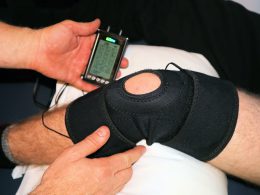In the rapidly evolving landscape of healthcare, digital health tools have emerged as a transformative force, reshaping how patients interact with healthcare providers and manage their health. From mobile health apps to wearable devices and telehealth platforms, these tools are not only enhancing the efficiency of healthcare delivery but also significantly improving patient engagement. This article delves into the multifaceted impact of digital health tools on patient engagement, exploring their benefits, challenges, and future potential.
Understanding Digital Health Tools
Digital health tools encompass a wide range of technologies designed to support and improve health outcomes. These tools include:
- Mobile Health Apps: Applications that offer health-related services on smartphones and tablets.
- Wearable Devices: Gadgets like fitness trackers and smartwatches that monitor various health metrics.
- Telehealth Platforms: Online services that provide remote medical consultations and care.
- Electronic Health Records (EHRs): Digital versions of patients’ paper charts, accessible to both patients and healthcare providers.
- Patient Portals: Online platforms where patients can access their health information, schedule appointments, and communicate with their healthcare providers.
Enhancing Patient Engagement
Patient engagement refers to the involvement of patients in their own healthcare decisions and management. Digital health tools have been instrumental in fostering this engagement in several ways:
1. Accessibility and Convenience
One of the most significant impacts of digital health tools is the increased accessibility and convenience they offer. Patients can now access healthcare services and information at their fingertips, without the need for physical visits to healthcare facilities. For instance, mobile health apps allow patients to book appointments, receive medication reminders, and access educational resources. Telehealth platforms enable remote consultations, saving time and reducing the need for travel.
2. Empowerment Through Information
Digital health tools provide patients with a wealth of information, empowering them to take charge of their health. Patient portals and EHRs give patients access to their medical records, lab results, and treatment plans. This transparency fosters a collaborative relationship between patients and healthcare providers, leading to more informed decision-making and better health outcomes.
3. Real-Time Monitoring and Feedback
Wearable devices and health apps offer real-time monitoring of various health metrics such as heart rate, physical activity, sleep patterns, and glucose levels. This continuous monitoring allows patients to track their progress and receive instant feedback. For example, a diabetic patient can use a glucose monitor app to keep track of their blood sugar levels and receive alerts if they go beyond the normal range. This real-time data helps patients make timely adjustments to their lifestyle and treatment plans.

4. Personalized Health Management
Digital health tools enable personalized health management by tailoring recommendations and interventions to individual needs. Mobile health apps often use algorithms and artificial intelligence to provide personalized advice based on a patient’s health data. For instance, a fitness app can create a customized workout plan based on a user’s fitness level and goals. This personalization enhances patient engagement by making health management more relevant and effective.
5. Improved Communication
Effective communication between patients and healthcare providers is crucial for patient engagement. Digital health tools facilitate this communication through secure messaging systems, video calls, and online consultations. Patient portals allow patients to ask questions, request prescription refills, and receive follow-up care instructions. This continuous communication ensures that patients stay connected with their healthcare providers, leading to better adherence to treatment plans and improved health outcomes.
Challenges and Considerations
While digital health tools offer numerous benefits, they also come with certain challenges and considerations:
1. Digital Divide
Not all patients have equal access to digital health tools. Factors such as age, socioeconomic status, and geographic location can affect a patient’s ability to use these technologies. For instance, older adults may have difficulty navigating mobile health apps, while individuals in rural areas may lack reliable internet access. Addressing this digital divide is essential to ensure that all patients can benefit from digital health tools.
2. Privacy and Security
The use of digital health tools involves the collection and storage of sensitive health information. Ensuring the privacy and security of this data is paramount. Healthcare providers and technology developers must adhere to strict regulations and implement robust security measures to protect patient information from breaches and unauthorized access.
3. Integration with Existing Systems
For digital health tools to be effective, they must seamlessly integrate with existing healthcare systems and workflows. This integration can be challenging, especially in healthcare settings with outdated infrastructure. Ensuring interoperability between different digital health tools and EHR systems is crucial for providing a cohesive and efficient healthcare experience.
4. User Engagement and Adherence
The success of digital health tools depends on patient engagement and adherence. Simply providing access to these tools is not enough; patients must be motivated to use them consistently. Healthcare providers play a vital role in educating patients about the benefits of digital health tools and encouraging their use. Additionally, the design and usability of these tools should be user-friendly to enhance patient engagement.

The Future of Digital Health Tools
The future of digital health tools holds immense potential for further enhancing patient engagement. Advancements in technology, such as artificial intelligence, machine learning, and big data analytics, will enable even more personalized and predictive healthcare solutions. For example, AI-powered chatbots can provide instant responses to patient queries, while predictive analytics can identify potential health risks and recommend preventive measures.
Moreover, the integration of digital health tools with emerging technologies like virtual reality (VR) and augmented reality (AR) can revolutionize patient education and rehabilitation. VR can be used to create immersive educational experiences for patients, while AR can assist in physical therapy by providing real-time guidance and feedback.
Conclusion
Digital health tools have undeniably transformed patient engagement, making healthcare more accessible, personalized, and efficient. By empowering patients with information, facilitating real-time monitoring, and improving communication, these tools have the potential to significantly enhance health outcomes. However, addressing challenges such as the digital divide, privacy concerns, and system integration is essential to fully realize the benefits of digital health tools. As technology continues to advance, the future of patient engagement looks promising, with digital health tools playing a pivotal role in shaping a more patient-centered healthcare system.












